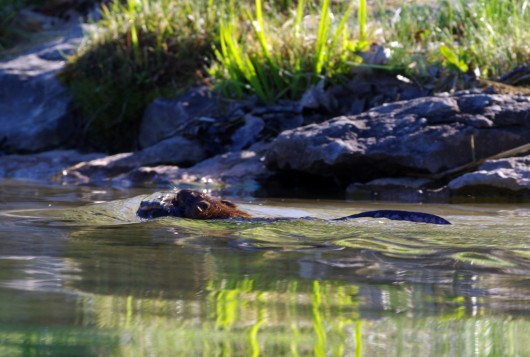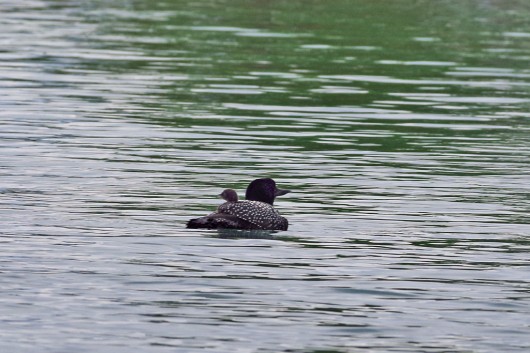We recently spotted this muskrat gathering his salad fixins’ early one morning in Ghost Bay. This critter is a rodent, but he’s no rat. According to Wikipedia, muskrats are the only species in the genus Ondatra. They are adaptable and omnivorous, rather ratlike actually. But they aren’t a member of the rattus club.
Muskrats are most active at night, and near dawn and dusk. But we’ve been seeing quite a bit of activity on Long Lake at other times as well.
This little guy was puttering about one morning, around 10 o’clock, very near our cottage in the first bay on the east side of the big lake after you leave the narrows.
It’s been critter central lately on Long Lake.
This painted turtle was stationed at the south end of the narrows sunning himself on the log on the east side. You know the spot since you know the lake. Turtles have been sunning themselves on that log for many years. Not this guy, though. This guy was sort of tea-saucer sized and must be fairly young.
By now, most Long Lakers have met our lake’s new loon chick, shown here near one parent while the other one dove for breakfast.
The 4th of July weekend on Long Lake must be a major challenge for loon chicks. This little one made it through to Sunday, so the power boaters and tubers must have been on the lookout. Parent and chick were very relaxed as we paddled by early in the morning on our way to Ghost Bay. This photo was taken with a long lens, but the parent was aware of us and still didn’t yodel an alarm or go into vulture pose.
What a great time to be at the lake!







